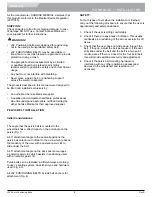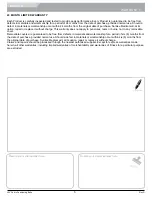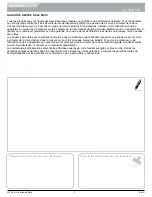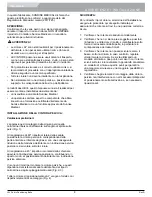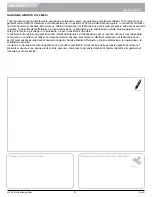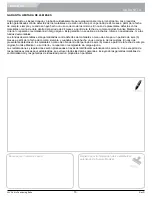
JAY Pelvic Positioning Belts
Rev.D
4
ENGLISH
WARNINGS / INSTALLATION
As the manufacturer, SUNRISE MEDICAL, declares that
this product conforms to the Medical Device Regulation
(2017/745).
SHIPPING:
Check all parts are free from shipping damage. In case
of damage DO NOT use. Contact Sunrise Medical or
your supplier for further instructions.
WARNING!
• JAY Positioning belts were designed for positioning,
not to be used as transportation safety belt!
• JAY POSITIONING BELTS may be used while in
transit but are not crash tested or approved to provide
protection during a crash.
• An appropriate clinical assessment by a clinician
or qualified wheelchair professional is highly
recommended to guarantee safety and correct clinical
usage.
• Any belt must not interfere with breathing.
• Never place a pelvic belt, or positioning support
across the waist or abdomen.
The products described in this manual were designed to
be fitted and installed exclusively by:
• An authorized Sunrise Medical supplier.
• A qualified and competent healthcare professional
who has undergone appropriate certified training by
either Sunrise Medical or their approved supplier.
PELVIC BELT INSTALLATION:
Initial Considerations:
The angle that the pelvic belt is mounted to the
wheelchair has a direct impact on the pull angle on the
pelvis (Fig. 1).
A 60° attachment angle to the seat rail positions the
pelvic belt anterior and inferior to the axis, which reduces
the tendency of the user with a posterior pelvic tilt to
slide under the belt.
A 45° attachment angle on the back post encourages
a posterior pelvic tilt, which assists in positioning users
with an anterior pelvic tilt.
Pelvic belts can be installed in different ways according
to user`s seating system, wheelchair type and hardware
used (Fig. 2-3).
All JAY POSITIONING BELTS include belt anchors for
attachment (Fig. 4).
SAFETY:
For both types of belt, when the installation is finished,
carry out the following procedure to ensure that the user is
appropriately and safely positioned:
1. Check if the user is sitting comfortably.
2. Check if there are any areas of irritation. This usually
manifests as a reddening of the skin especially in soft
tissue.
3. Check that the user does not slide down through the
belt, if they do, adjust the belt as required. If the user
still slides under the belt and the belt is a two point
model, asses if there is a need for the four point belt,
this will provide additional security and adjustment.
4. Check if the pelvic belt mounting hardware is
interfering with any other positioning accessories/
devices on the wheelchair and reposition it if
necessary.




